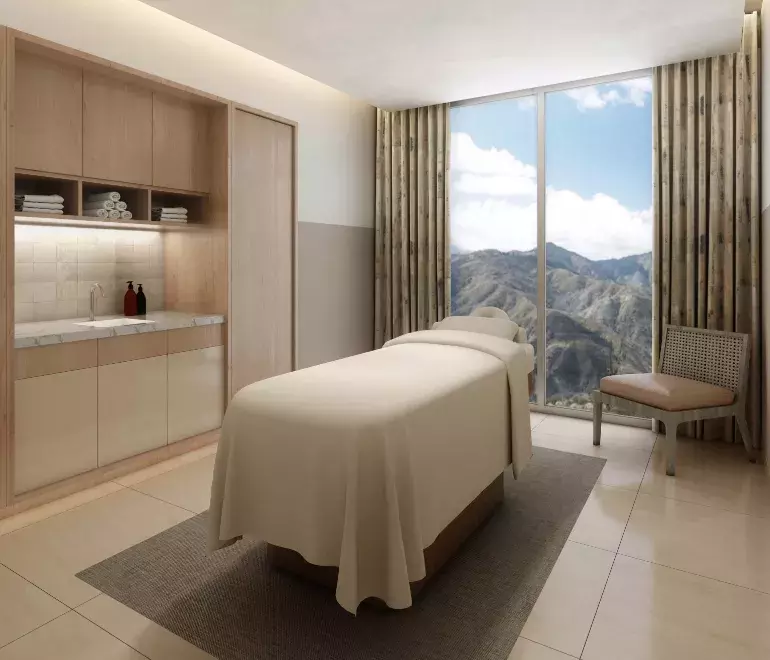Vogue’s Christian Allaire Fashion Daze Q&A
Entertainment | 4 MIN
Vogue fashion writer Christian Allaire sat down with The Y Report to discuss the Yaamava’ Fashion Daze panel, Native American fashion and his career.
By Megan Garcia
Fashion Daze provided the opportunity for Native American artists to showcase their work at Yaamava’ Resort & Casino at San Manuel, while also uniting them to share their story. Vogue fashion writer Christian Allaire (Ojibwe) moderated a discussion with San Manuel Tribal Citizens, designer Jaime Okuma and actress Amber Midthunder to spotlight their careers and Native American influence in their artwork.
How did you prep for the Fashion Daze panel discussion?
Like for any panel, researching who I am going to be talking to and trying to find a through line of how each panelist is connected in some way since all the panelists are so different. I try not to prep too much; I like to go with the flow of the conversation.
What topics did you feel were important to cover?
I felt it was important to cover how Native American designers like Jamie Okuma are breaking into the mainstream fashion world and how they navigate that. Same with actress Amber Midthunder, who is trailblazing in Hollywood. I thought that was an important point to touch on, as well as the indigenous experience of being a business owner or being a youth on TikTok. All these things sound different on paper, but the crux of these topics is being authentically yourself and never wavering from that.
How have you seen Native American designs rise in mainstream fashion over the last few years?
I think native design has grown a lot over the past few years. Now you see virtually every fashion category has a native designer involved in some way. There's native swimwear, beauty brands, formal wear, menswear. It's really crazy to see how much it's grown and the scope of work and different styles that are available now. I think that's really inspiring to see and I just hope that continues to grow.
How important is it to have a platform like Fashion Daze for Native American voices in the industry?
An event like Fashion Daze is so important. There are still so few platforms that allow indigenous designers to show their work. It's changing but there still isn't enough, so events like this really gives them a really hearty platform to just be authentically themselves and they don't have to change for anyone.

What compelled you for a career in fashion?
I've always loved fashion since I was young. I really attribute that to just growing up on the pow wow scene and seeing my sister do jingle dress dancing. I think being exposed to regalia at a young age made me love fashion and I knew I always wanted to be involved in some way. I actually thought I wanted to be a designer at first, but I can't sew, so through my love for English classes and writing, it made me think about being a fashion writer.
How has the mainstream scene changed for Native American designers and models over the past few years?
I think we've seen more non-indigenous brands notice native designers and want to work with them and collaborate with them. I think that's something that's new and cool to see. I will say there are more platforms slowly growing up, like Vancouver Indigenous Fashion Week and Toronto Indigenous Fashion Week. So that in turn does cause them to be more out there and people are noticing them more, which is great.
How different is Fashion Daze from other fashion shows?
I think it's cool that Fashion Daze was hosted on the [San Manuel Band of Mission Indian]'s land and was mindful about educating people about the Tribe by having the Tribal Community at the show and at the panel. I think that was really special to see, as well as the mix of people they brought together too, like Orlando Dugi to Jennifer Younger, just getting these artists in the same room is something really special.

What stories are important to tell at fashion shows?
I think something that was done really well at Fashion Daze was allowing designers to speak about their creativity and what inspired their work and their backstory. I think a lot of fashion shows don't often do that. You don't get to meet the designers or learn about what inspired them, but at Fashion Daze, designers were encouraged to mingle with the crowd and share their stories. I think it’s important for any designers to be given that platform to educate people about their work.
Where do you see Native American designs going in the future?
I think native design is just going to grow more modern and unexpected and crazy. I think we've seen the tip of the iceberg, but I think we'll see more designers push the boundaries of how they can incorporate these crafts into their work in interesting ways. I think that's really the beauty of fashion is when things are unique and one of a kind.
What has been your favorite part about Fashion Daze?
It's the mix and mingling after the show. I love the fashion show, but for me the real treat is getting to meet the designers behind the brand and to hear their story and meet their models. That's something that I don't get to do every day and I really love that.



